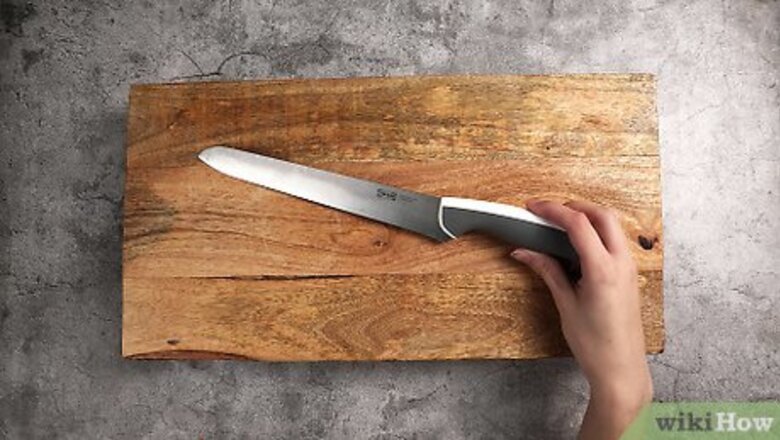
views
Slicing a Loaf of Bread
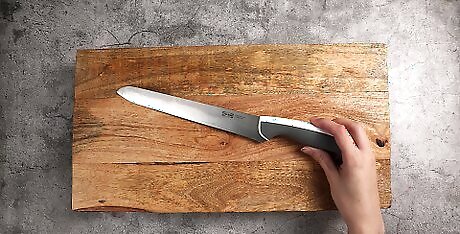
Choose a suitable bread knife. The best bread knives will have a deep, serrated edge. The blade should extend all the way into the handle. If the blade only extends partway into the handle, then your knife won't have enough support. Some people find that bread knives with a wavy edge are easier to cut with than bread knives with a jagged edge.
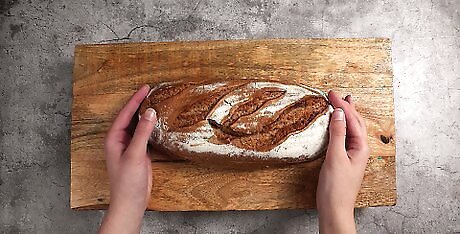
Place your loaf of bread on a large, wooden cutting board. The board should be a little longer than the loaf of bread itself. This way, you will have enough room for the slices as you cut them. Position the loaf towards one end of the board. You'll start cutting from the side that has the most board space available.
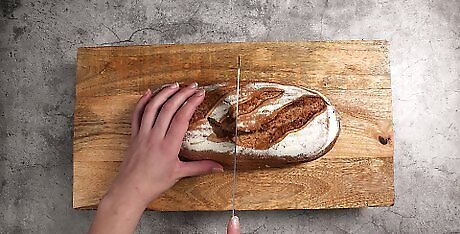
Consider slicing large, round loaves in half. If you have a really large loaf of bread, you might find it easier to work with if slice it right down the middle. This way, you'll end up with two semi-circles. When you go to slice these halves, place the halves cut-side-down on the board.
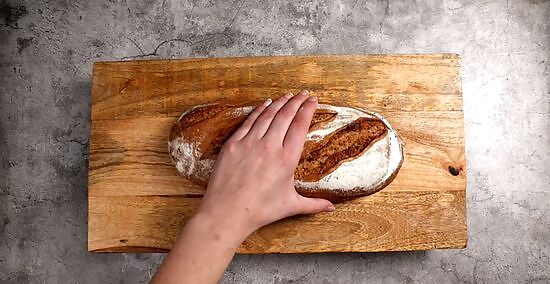
Place your hand over the crust and gently grip the loaf by the sides. This will keep it from slipping around on the cutting board. Avoid pressing down on top of the loaf. This will only mush the bread inside.
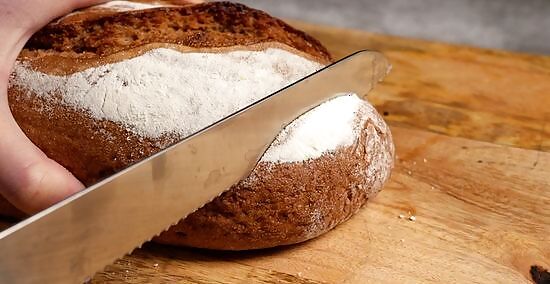
Go into the crust at a slight angle. Position your knife close to the heel of the loaf. Angle it slightly and saw into the bread.
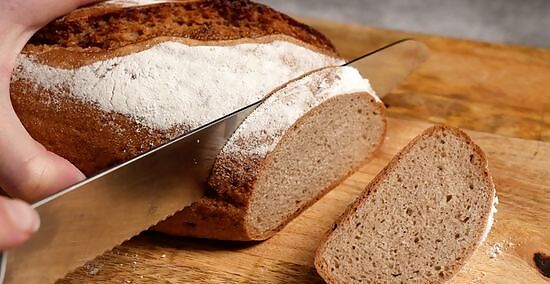
Saw downwards once the knife pierces the crust. As soon as the knife gets into the bread, position the knife so that the blade edge is parallel to the cutting board. Use a back and forth sawing motion as you cut downward. Apply only a little bit of pressure; if you have a good knife, you won't have to press hard at all. You can make the slices as thin or as thick as you want them. A good guideline is ½ to 1 inch (1.27 to 2.54 centimeters) thick. You can also use the width of your finger as a cutting guide.
Slicing Rolls, Buns, and Bagels
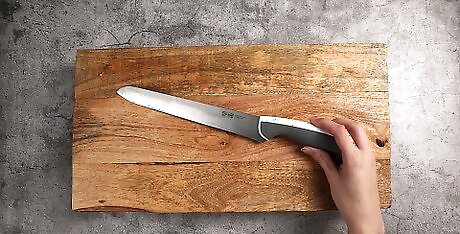
Choose a bread knife with a serrated edge. The deeper the serrated edge is, the better; a shallow edge won't cut as well. Also, try to find a knife where the blade extends all the way through the handle. If the blade only goes partway into the handle, your knife won't have enough support. Your knife can have a jagged or a wavy serrated edge. Choose one that is easiest for you to cut with.
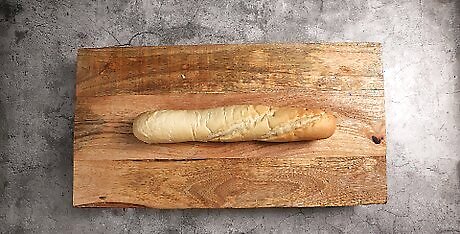
Place your bread roll flat on a cutting board. Make sure that the cutting board is big enough to fit the entire bread roll. This will work for rolls, buns, bagels, English muffins, and baguettes.
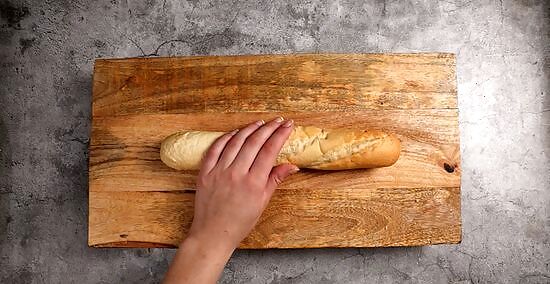
Place your free hand on top of the bread roll to hold it steady. If you are working with a smaller piece of bread, such as a bagel or an English muffin, then you can use your fingertips.
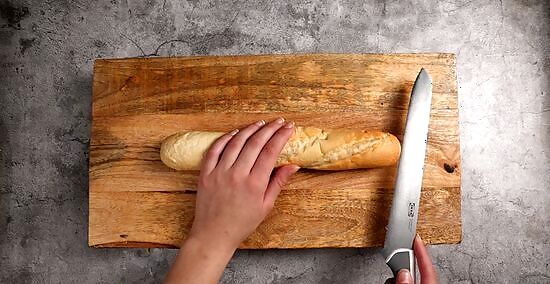
Place your knife against the side of the roll. The serrated edge should be touching the side of the roll. The flat side of the blade should be parallel to the cutting board. Try to position the knife right in the center.
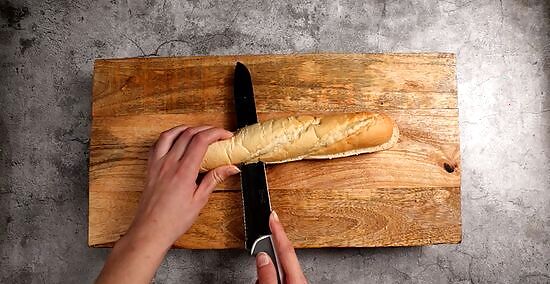
Saw back and forth across the bread roll. When you reach the end, you can flip the roll on it's side and continue sawing downward. If you are cutting a baguette for a sandwich, consider stopping just short of the long end.. This way, you can open it up like a hot dog bun, and stuff it with sandwich goodies.
Slicing Baguettes for Hors d’oeuvres
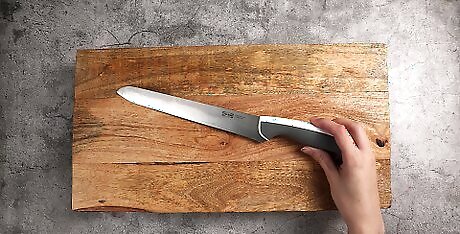
Choose a bread knife. Try to find one that has a deep, serrated edge. A knife with a shallower edge may not cut as well. Also, try to find a bread knife whose blade goes all the way through the handle. It will give you the best support. A bread knife whose blade only extends partway into the handle will not give you enough support. Some people find that knives with wavy edges are easier to use than knives with jagged edges.
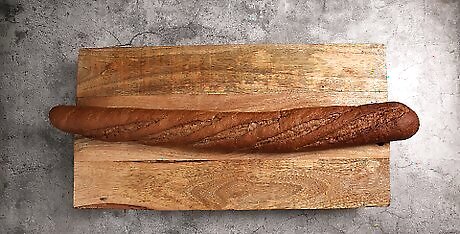
Place your baguette flat on a cutting board. If your cutting board is not long enough, then place part of the baguette on the board. As you continue to slice it, you will scoop the sliced parts off to the side and push the baguette further up onto the board.
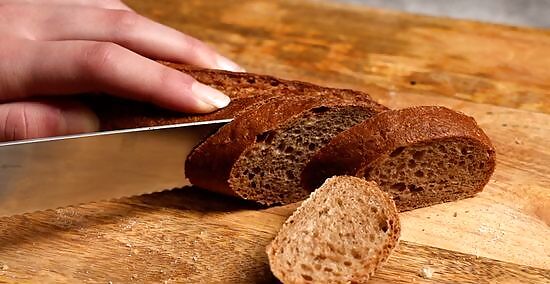
Cut the baguette into thin slices. Start by going into the baguette at a slight angle, close to the heel. Once the knife pierces the crust, position the knife so that the jagged blade is parallel to the cutting board. For thin slices, try cutting them ¼ to ½ inch (0.65 to 1.27 centimeters). For thicker slices, try cutting them 1 to 2 inches (2.54 to 5.08 centimeters) tick.
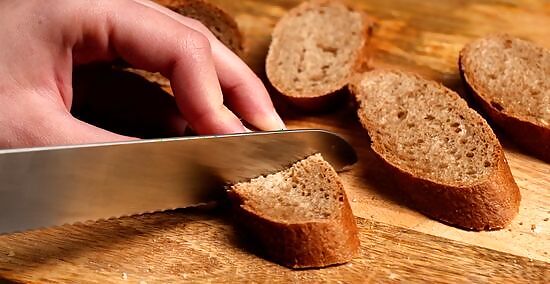
Consider cutting thicker slices in half. Place a slice cut-side-down onto the cutting board. Cut the slice straight down the middle so that you end up with two half-circles. Repeat this for the rest of the thick slices. If the bread is very sturdy, you can set it down on the cutting board and cut horizontally into it, with the flat side of the blade parallel to the cutting board. You can also use this technique for ciabatta bread.
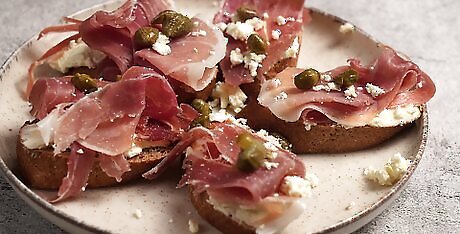
Serve your bread slices. Top the thin slices with ham, salami, or thin slices of cheese. Serve the thicker, half-circle slices with dips or olive oil. If you are serving your bread with olive oil, consider mixing in some balsamic vinegar and dried herbs, such as oregano, rosemary, thyme, or basil.
Cutting Sourdough for Bread Bowls
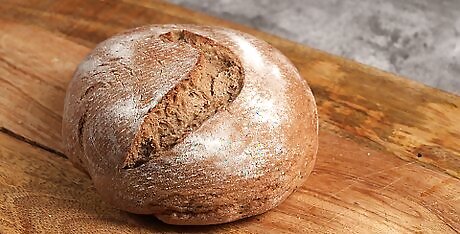
Get a round, 6 inch (15.24) wide bread roll. Most bread bowls are made using sourdough, but French bread could also be tasty.
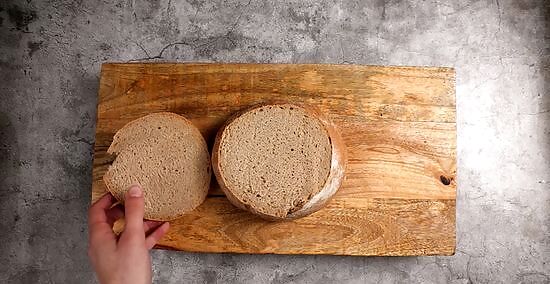
Slice the top third off with a serrated bread knife and set it aside. Turn the bread roll on its side, and use your bread knife to slice the top part off. Set the top part you just cut off to the side. This will become the lid for your bread bowl later on.
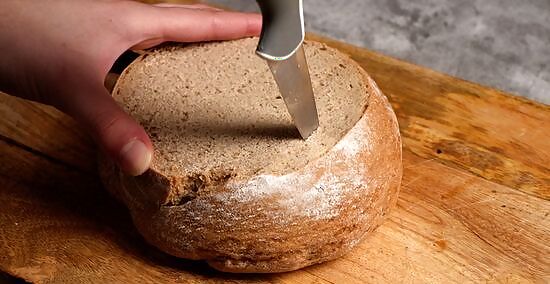
Cut a circle inside the bread bowl, about ¼ to ½ inch (0.64 to 1.27 centimeters) away from the edge. Be careful not to cut all the way through the bottom of the bread. You can use a bread knife or a paring knife for this.
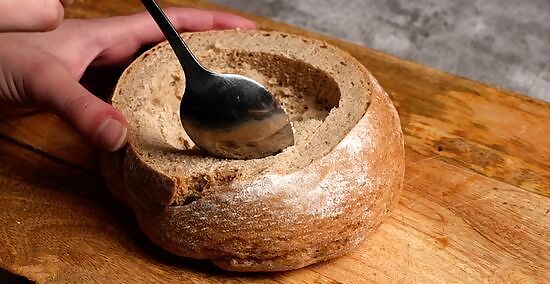
Pull the circle out. It should peel away from the bottom. If you want, you can hallow out the sides using a spoon or your fingers. Be careful not to make the inner walls too thin, however.
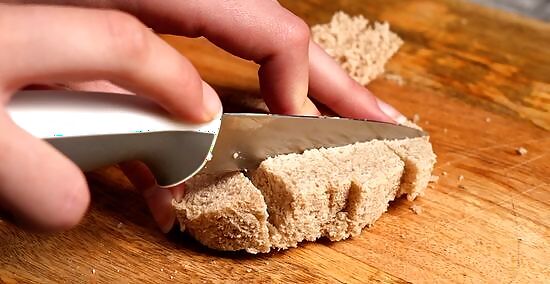
Consider cutting the bread circle you pulled out into cubes. You can use these cubes for dipping into the soup or sauce.
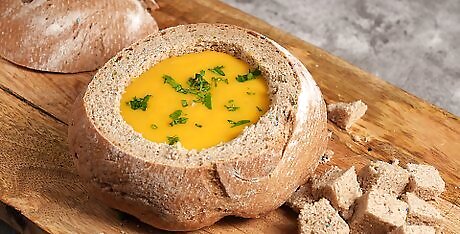
Pour the soup or dip into the bread bowl. If you want, you can place the lid on top to keep the soup or dip warm. Serve the bread bowl with the bread cubes for dipping.
Using an Electric Knife
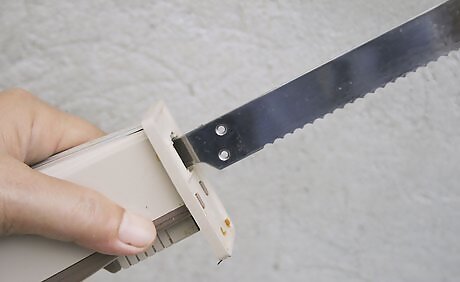
Use an electric knife to get thin slices or to cut warm bread. Keep in mind, however ,if you are cutting warm bread, you'll need to go for thicker slices. This will help keep the bread from going all mushy.
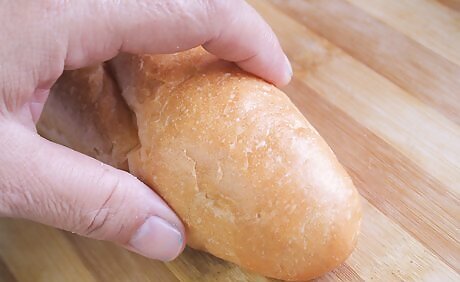
Hold the bread lightly by the sides. Hold it just firmly enough to keep it in place, but not so firmly that you are squashing it.
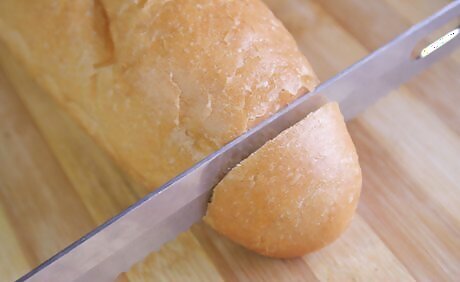
Turn the knife on and cut into the bread slightly from the side. Keep the knife at a slight angle.
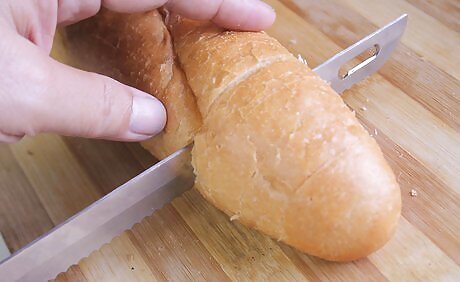
Cut straight down once you pierce the crust. Position the knife so that it is parallel to the cutting board. Carefully bring it down towards the board.
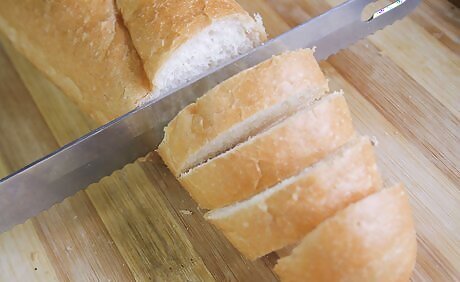
Cut the slices as thin or as thick as you want them. If the bread is warm, you might have more luck with thicker slices.




















Comments
0 comment